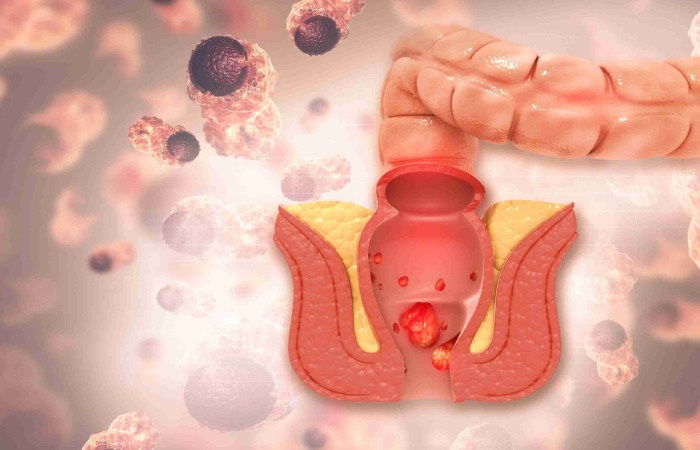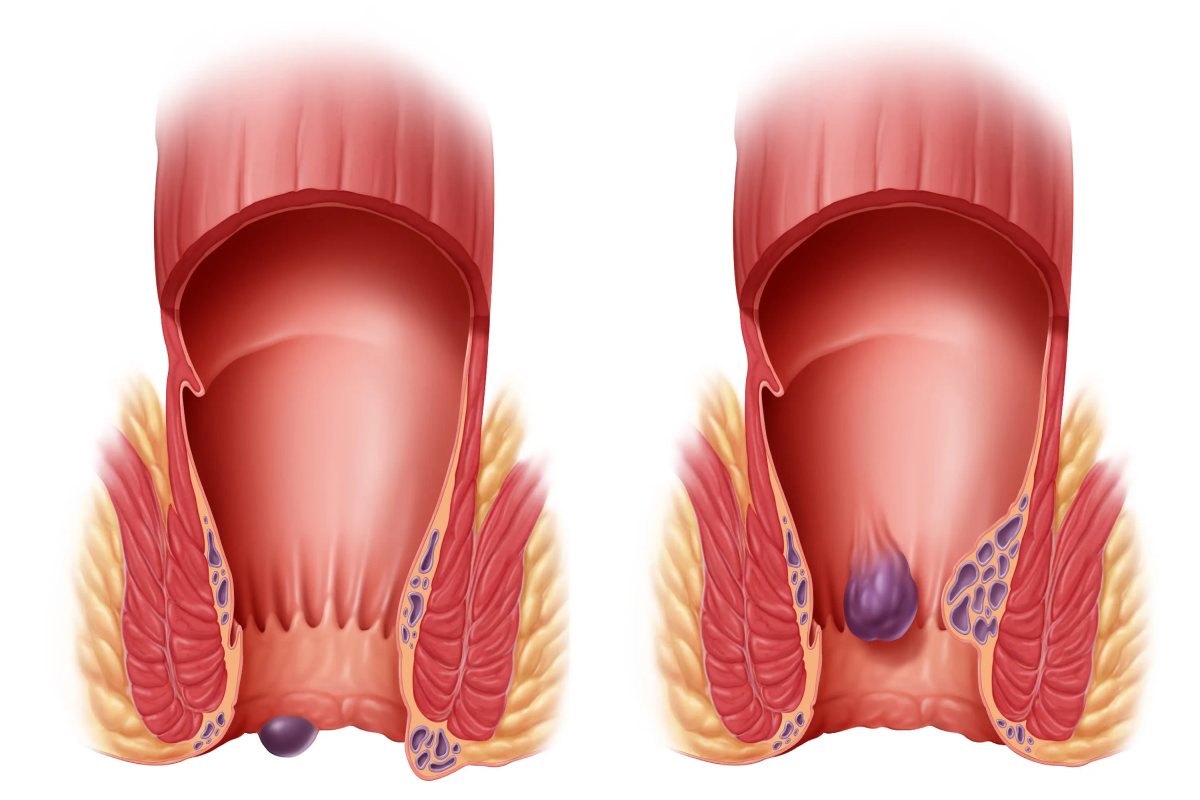Como quitar las hemorroides – Hemorrhoids or piles are a set of inflamed tissues in the anal area. They contain muscle, blood vessels, elastic fibers, and connective tissue. They can have different sizes and can be internal or external. Usually, the external ones appear on the outer edge of the anus. The internal hemorrhoids are located between 2 and 4 cm above the opening of the anus and are the most communal kind.
Table of Contents
Symptoms

In most cases, the symptoms of hemorrhoids are not serious. They usually go away on their own after a few days. The following symptoms an individual with hemorrhoids may experience:
- Bleeding during bowel movements
- Skin protrusion during bowel movements
- Itching in the anal area
- Pain in the anal area
- Masa(s) sensible(s)
Hemorrhoids are classified into 4 phases:
Phase I: There are minor inflammations, usually inside the wall of the anus. They are not visible.
Phase II: In phase II, the hemorrhoids are more significant than stage I but remain inside the anus. They can expel the feces, but they will reappear.
Phase III: They are called prolapsed hemorrhoids and appear outside the anus. The individual may feel that they are hanging from the rectum but can easily reinsert.
Phase IV: They cannot be expelled and need treatment. They are usually huge and remain outside the anus.
External hemorrhoids form small lumps on the outside of the rim of the anus. They are very scratchy and can be painful if a blood clot develops. External and thrombosed hemorrhoids or those that have clotted require immediate medical treatment.
Causes
The exact cause of hemorrhoids is unknown. A great deal of pressure is put on the human rectal veins due to our upright posture, which can cause bulging. Other contributing factors include:
- Aging
- Chronic constipation or diarrhea
- The pregnancy
- Inheritance
- straining during bowel movements
- Defective bowel function due to excessive use of laxatives or enemas
- Spending prolonged periods on the toilet (for example, reading)
Treatment of Hemorrhoids: self-care
For hemorrhoid treatment at home, follow your healthcare provider’s advice. Some treatments help relieve symptoms right away. Others involve changes in diet and exercise habits. These can help relieve constipation and may prevent hemorrhoids from coming back.
How to Relieve?

Your healthcare provider may prescribe an anti-inflammatory medication to relieve your symptoms. These tips also help reduce pain and swelling.
Sitz baths: A sitz bath means sitting in a few inches of warm water. It can help keep the area clean, and a bath of 10 minutes twice a day can relieve the pain of hemorrhoids.
Develop good bowel habits: When you feel the urge to go to the bathroom. Do not ignore the desire to have a bowel movement. It can lead to constipation, hard stools, and strain. Also, do not read while sitting on the toilet. Stay seated only as long as necessary. Wipe gently with soft, unscented toilet paper or baby wipes. Hygiene is also essential to reduce hemorrhoids.
Use ice packs: Putting an ice pack on an external hemorrhoid can help immediately relieve pain. Put on ice for 15 to 20 minutes at a time. It will also help to reduce the blood clot. Place a fabric between the ice and the skin to avoid skin damage.
Take other measures: Laxatives and enemas can help decrease constipation. But use them only on the recommendation of your health care provider. To relieve symptoms, try using cotton pads soaked in Witch Hazel. These are available at most pharmacies. Over-the-counter petroleum jelly and hemorrhoid ointments may also provide relief.
Reduce coffee consumption: excess salt, spices, acids, chocolate, spicy foods, and alcohol.
Drink more water: Drinking more water can help relieve constipation, along with a high-fiber diet. It is because insoluble fiber absorbs water, making stool soft and bulky. Be sure throughout the day to drink plenty of water.
When is surgery for hemorrhoids indicated?
Surgery for external hemorrhoids only indicates in cases where, after following treatment with medication and diet, the discomfort continues, since in general, with ointments, performing sitz baths, and a diet rich in fibers, the external hemorrhoids disappear.
However, after surgery, the individual should continue to eat a high-fiber diet and avoid straining during bowel movements to prevent new hemorrhoids from developing.
Care during treatment
During treatment, the individual must take some care, such as:
- Avoid using toilet paper, washing the anal region with soap and water after bowel movements
- Do not lift the weight
- Do not eat highly seasoned or spicy foods
- Perform regular physical activity such as walking or Zumba
- A ring-shaped cushion with an opening in the center can use to sit on if necessary
Another important suggestion is not to strain when having a bowel movement, as this increases the risk of more hemorrhoids forming.
Signs of Improvement
Signs of improvement in external hemorrhoids include pain relief, especially when sitting up and having a bowel movement; decreased swelling and; the decrease or disappearance of blood in the stools. Likewise, if the individual no longer feels the hemorrhoid, it has disappeared.

